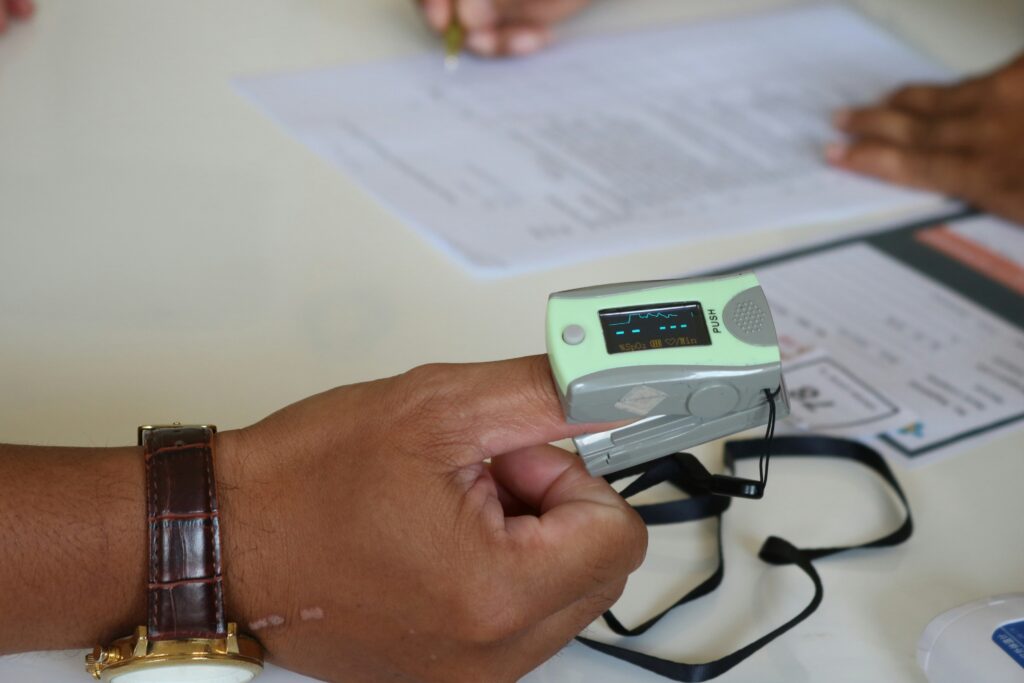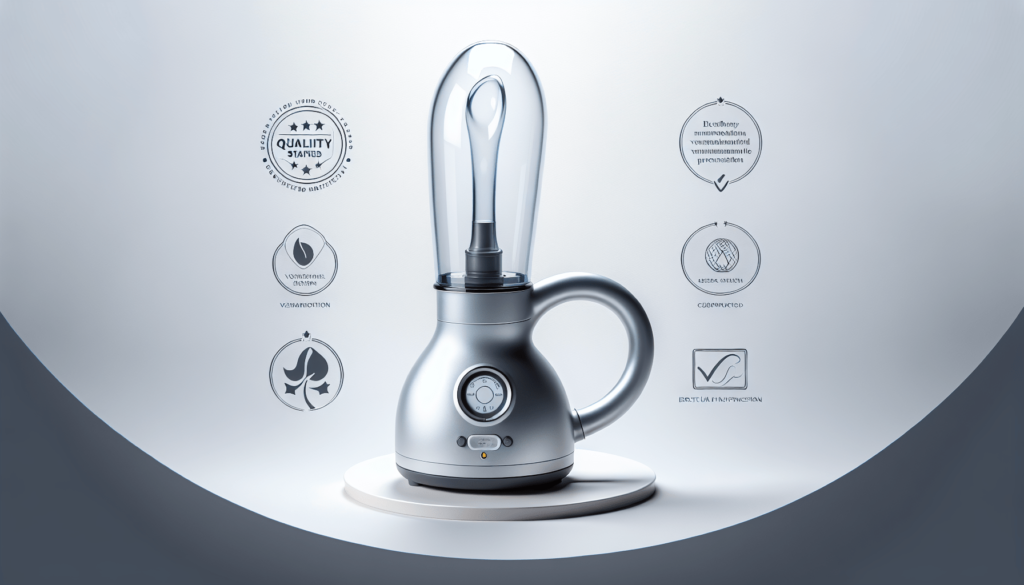Have you ever wondered about the certifications or quality standards associated with penis pumps? It's a topic that intrigues many, and understanding it better can help you make informed decisions.

What Are Penis Pumps?
Basic Overview
Penis pumps, also known as vacuum erection devices (VEDs), are medical devices designed to help individuals with erectile dysfunction (ED) achieve and maintain an erection. Despite the simple principle behind their operation, these devices have various components and mechanisms that necessitate stringent quality standards to ensure safety and effectiveness.
Purpose and Use
Initially developed to aid those suffering from erectile dysfunction, penis pumps now serve a broader range of purposes. They can also be used for penile rehabilitation, improving penile blood flow post-prostate surgery, or even temporarily increasing penis size.
Why Certifications and Quality Standards Matter
Ensuring Safety
Penis pumps need to adhere to specific safety regulations to avoid causing harm. Proper certifications can assure you that the device has been tested rigorously and is safe for use.
Validating Effectiveness
Certifications also serve to validate the effectiveness of the device, ensuring that it performs its intended functions without causing adverse effects.
Building Trust
When a product has a recognized certification, it builds trust. Consumers are more likely to purchase and use it, knowing it meets high industry standards.
Types of Certifications
Health and Medical Certifications
There are several types of certifications, each focusing on different aspects of the device. The most relevant ones for penis pumps include:
| Certification | Description |
|---|---|
| FDA (Food and Drug Administration) | Ensures the device is safe and effective for medical use. A stringent approval process with rigorous testing. |
| CE Mark | Indicates that a product complies with EU safety, health, and environmental requirements. Essential for sales in European markets. |
| ISO (International Organization for Standardization) | Ensures quality management systems are in place and functional. ISO 13485 is particularly relevant for medical devices. |
Consumer Safety Standards
While medical certifications are critical, consumer safety standards also play a vital role. These standards ensure the user experience is safe and satisfactory.
| Certification | Description |
|---|---|
| RoHS (Restriction of Hazardous Substances) | Restricts the use of specific hazardous materials, ensuring the device is environmentally friendly and safe for users. |
| UL (Underwriters Laboratories) | Focuses on safety-related certification, ensuring that the electrical components meet safety standards. |
| CSA (Canadian Standards Association) | Ensures that the product meets Canadian safety, performance, and environmental standards. |
The FDA's Role in Penis Pump Certification
Overview of FDA Certification
The FDA is a crucial body in the certification of medical devices, including penis pumps. They categorize these devices as Class II medical devices, necessitating pre-market notification and clearance.
FDA Approval Process
The approval process involves rigorous testing and clinical trials to ensure the device’s safety and effectiveness. Studies include compliance with manufacturing standards, quality control, and user safety.
FDA Requirements
For a penis pump to achieve FDA certification, it must:
- Demonstrate clinical effectiveness in treating erectile dysfunction.
- Pass bio-compatibility testing to ensure the materials used do not cause harm.
- Show electrical safety and electromagnetic compatibility if the device includes electronic components.

CE Marking for Penis Pumps
Purpose of the CE Mark
The CE Mark signifies conformity with health, safety, and environmental protection standards for products sold within the European Economic Area (EEA).
CE Certification Process
Achieving a CE Mark involves:
- Conformity Assessment: Conducting a risk assessment and documenting how those risks are mitigated.
- Technical Documentation: Preparation of technical documents providing evidence of conformity.
- Declaration of Conformity: A formal statement asserting the product meets all legal requirements.
Importance of the CE Mark
The CE Mark is crucial for products sold in Europe. It assures consumers that the product complies with EEA standards, enhancing trust and marketability.
ISO Standards Relevant to Penis Pumps
ISO 13485
ISO 13485 outlines the requirements for a comprehensive quality management system for the design and manufacture of medical devices. Compliance with this standard indicates a high level of quality and reliability.
ISO Process
The ISO certification process includes:
- Documenting and implementing a quality management system.
- Conducting internal audits and undergoing external assessments.
- Continual monitoring and improvement through regular audits.
Benefits of ISO Certification
ISO certification demonstrates commitment to quality and safety. It assures you that the manufacturer follows stringent manufacturing protocols to maintain high standards.

Consumer Safety Standards: RoHS, UL, and CSA
RoHS Compliance
The RoHS directive restricts hazardous substances in electronic and electrical devices, promoting safety and environmental sustainability.
UL Certification
UL certification focuses on the safety of the product's electrical components, ensuring they do not pose any fire or shock hazard.
CSA Certification
CSA certification ensures products comply with Canadian safety, performance, and environmental standards, covering electrical, mechanical, and other safety aspects.
Clinical Studies and Trials
Importance in Certification
Clinical trials are a vital component of the certification process, particularly for FDA and CE Mark approvals. These trials assess the device's safety, effectiveness, and user satisfaction.
What Clinical Trials Involve
Clinical trials for penis pumps generally involve:
- Patient Selection: Choosing a diverse group of volunteers suffering from erectile dysfunction.
- Controlled Environment: Testing the device under controlled conditions to monitor safety and efficacy.
- Data Collection: Gathering extensive data to evaluate performance, safety, and patient satisfaction.
- Analysis and Reporting: Analyzing results and submitting detailed reports to regulatory bodies.
Impact on Certifications
The results from clinical trials greatly impact the device's chances of gaining certifications. Positive results demonstrating safety and effectiveness are a prerequisite for approval.

Understanding Quality Control and Manufacturing Standards
Importance in Medical Device Production
Quality control and manufacturing standards ensure that the devices produced are consistent and reliable, meeting all safety and efficacy requirements.
Key Components of Quality Control
Quality control encompasses several aspects, including:
- Material Quality: Ensuring the materials used are safe, durable, and biocompatible.
- Manufacturing Processes: Adhering to stringent protocols to maintain product consistency.
- Final Product Testing: Rigorously testing each device before it reaches the market.
Standards Governing Manufacturing
ISO 13485 and GMP (Good Manufacturing Practices) are commonly followed standards in manufacturing. These ensure the entire process, from design to final product, adheres to high-quality benchmarks.
Regulatory Bodies and Their Influence
Global Regulatory Bodies
Several regulatory bodies govern the approval and quality standards for medical devices across the world. Each has its own set of regulations that manufacturers must comply with.
| Regulatory Body | Region | Description |
|---|---|---|
| FDA | USA | Ensures safety and efficacy of medical devices in the USA. |
| EMA (European Medicines Agency) | Europe | Governs the safety of medical devices throughout Europe. |
| TGA (Therapeutic Goods Administration) | Australia | Regulates therapeutic goods, including medical devices, in Australia. |
| PMDA (Pharmaceuticals and Medical Devices Agency) | Japan | Ensures medical device safety and efficacy in Japan. |
Influence of Regulatory Bodies
The guidelines and requirements set by these regulatory bodies influence the design, manufacturing, and marketing of penis pumps. They ensure that only products meeting high standards reach consumers, enhancing safety and effectiveness.

How to Verify Certifications and Standards
Checking Labels and Packaging
Certifications are often displayed on the device's packaging, labels, and user manuals. Look for marks such as FDA, CE, or ISO, which indicate rigorous testing and approval.
Online Verification
Regulatory bodies maintain databases where you can verify the certification status of medical devices. For instance, the FDA’s database allows you to search for approved medical devices by name or manufacturer.
Reputable Retailers
Purchasing from reputable retailers who provide certification information can also ensure you are buying a certified and safe product.
The Future of Penis Pump Certifications
Advancements in Technology
As technology advances, so do the standards and certifications. Innovations in materials, designs, and electronic components necessitate updated regulatory requirements to ensure ongoing safety.
Stricter Regulations
Future regulations are likely to become stricter, ensuring even higher safety and efficacy standards. This will further enhance consumer trust and provide more effective solutions for erectile dysfunction.
Global Harmonization
Efforts toward global harmonization of medical device regulations aim to streamline the certification process, making it easier for manufacturers to comply with standards across different regions.
Conclusion: Making Informed Decisions
Understanding the certifications and quality standards associated with penis pumps can significantly impact your purchasing decisions. By ensuring the device you choose has the appropriate certifications, you safeguard your health and ensure you’re using a product that meets rigorous safety and quality standards. Remember to check for labels, verify online, and opt for reputable retailers to make a well-informed choice.

